
I Participated in Keyket 2025
On Saturday, March 22, 2025, I participated in Keyboard Market Tokyo (Keyket) 2025 and debuted my custom keyboard, Cue2Keys. This article shares the atmosphere of the event day, the story behind my preparations, and my outlook for the future.
Please note that detailed design specifics and the development history of the product itself will be published in a separate article later.
On the Day of the Event
Until Setup
Although I had been organizing the items I needed to bring for several days, the amount of luggage was much larger than expected, making it a struggle. The products alone were bulky, and the total weight exceeded 10kg. I had no choice but to stuff other belongings into a suitcase and carry it on my shoulder, which felt like my arm was going to fall off. Nevertheless, I was fortunate to somehow arrive at the venue and begin setting up.
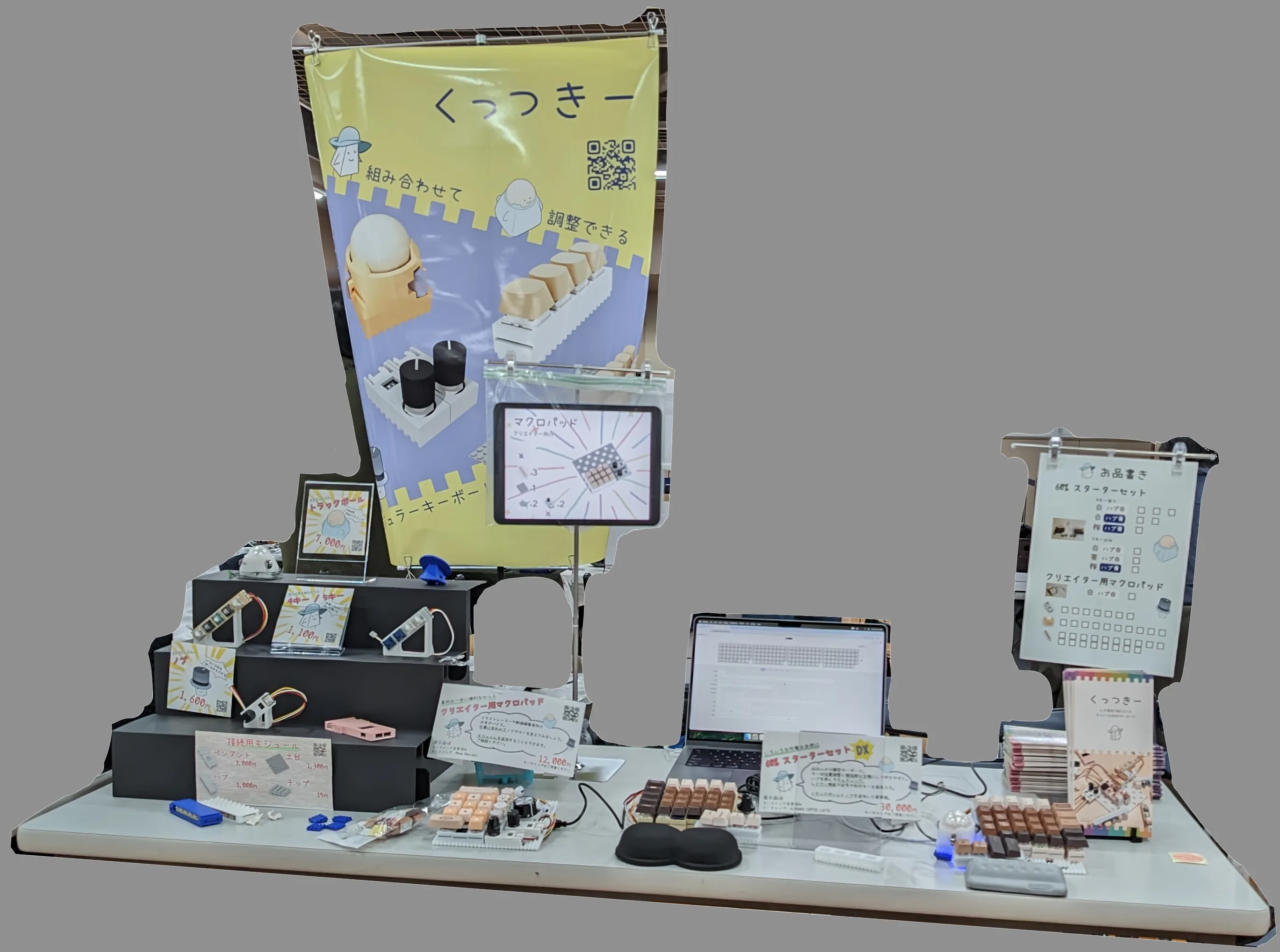
A photo of the booth taken just before opening. This was the only photo I could take during the event.
Opening
It was calm right after early admission began, but as time passed, more people gradually came to the booth, and by the time general admission started, a queue formed all at once. Thankfully, some people said they "came specifically to buy," and others had read the book I distributed at Tech Book Fest, which was a great encouragement.
On the other hand, my handling at the booth was quite inefficient, and I apologize for making people wait to receive their products. As I'll mention later, this was largely due to it being my first time, and I should be able to hand things over more smoothly next time.
I am very grateful that everything listed on the item list sold out. However, I didn't have time to post updates on social media, and I apologize for that inadequacy as well.
Even as the event progressed, people passing by showed interest, and there was a constant stream of visitors from the beginning. Before I knew it, I had been standing for five hours, which certainly took a toll on the back of my knees[1], but it felt like the time flew by in an instant.
Media Coverage
Several articles and videos also covered the event.
The familiar ITmedia visited my booth, and I was surprised when they released a short video the same day. I'm also very happy that they featured Cue2Keys in an article and a longer video.
Tobalog and monograph also introduced it in stylish videos.
If you know of any other articles or videos, I would be grateful if you could let me know.
Challenges and Reflections
As this was my first time selling hardware, many problems became apparent. I want to leverage these lessons for the next event.
- Couldn't find where things were
I couldn't keep track of what was in which box, causing delays during setup and when handing over products. I need to organize better and make an effort to label things. - Complicated item list
With mixed colors and types, even I couldn't grasp the list immediately. There were also mistakes in production quantities, so I want to standardize it next time. - Payments wouldn't go through
Perhaps because I wasn't used to Square, or maybe the credit card company was being cautious, some credit card payments failed. Thankfully, everyone also had cash, so it worked out, but I need to find a way to make payments more stable. - Forgetting to update the item list
Even though I had prepared a paper checklist for inventory, I forgot to update it and couldn't keep track of the remaining stock. I really need to check things off right away. - Difficult to explain, making it hard to ask for help
This is a common issue at events selling complex products, but because the product explanation was complicated, the creator (myself) had to handle everything on the day. This made it difficult to deal with troubleshooting or other tasks. Measures are needed to anticipate potential trouble requiring the creator to step away. - Poster curling up
Although it was sized for PO.SU.TA, the poster curled up because the bottom bar was too short. I'll try making a new bar to fix it. - Unstable tethering
I struggled because tethering from my own smartphone didn't work (luckily, my helper's phone worked). It seemed fewer people tried REMAP than I expected, so perhaps an offline demo would have been sufficient. - Setup and teardown took too long
As mentioned before, I didn't know what was in which box, and there were many display items, making it chaotic. Setup was down to the wire, I couldn't even announce the completion on social media, and I didn't have the余裕 (time/energy) to use the artisan keycaps I brought for display. Thorough preparation with ample time is crucial.
Preparations and Efforts
From here, I'll describe the efforts I made leading up to the event.
Just Applying First
Applications opened six months before the event. Although I had six months, all I had at that point was a prototype. From there, I needed to redesign various modules while also designing a trackball from scratch. Looking back, it was an extremely tight schedule, but at the time, I just applied without much thought. In the end, it turned out to be more intense than I imagined.
In November, there was Tech Book Fest, which was also a crunch time. The book covering the fundamental techniques of this product ended up being 112 pages, and I realized it took considerable effort just to compile what was already known[2]. Thus, my development time kept shrinking.
Until now, I had mostly dealt with software, where the worst case was needing to submit print materials a week in advance. The harsh realities of hardware development really hit home. PCB design and component selection take several days, ordering and delivery take two weeks, and if it doesn't work upon arrival, you have to reorder – the lead times are long. Particularly this time, for the first release, I had to handle everything: PCB design, component selection, case design/printing, firmware modification, etc. The sheer volume of tasks was overwhelming.
When I took a break before the new year to organize tasks, I counted 72[3]. It seemed impossible for one person.
Website Creation
When I displayed the product prototype at events like Tech Book Fest or had acquaintances try it and give feedback, it seemed that without explanation, it just looked like a bundle of cables. Conversely, when I explained it, I often received comments that it seemed interesting. Therefore, how to effectively convey its features was a major challenge. This was a situation where the power of design was needed. Creating content that conveyed the features at a glance before the first sales opportunity at Keyket was a crucial task.
I had a placeholder website and intended to create and replace it before the event, but as mentioned earlier, there was no sign I could finish it in time. All I had were some character illustrations and 3D models.
Therefore, I decided to entrust the website creation to a web designer acquaintance who happened to have some free time. Despite the unreasonable situation of having only about a month, I explained 1, and they delivered 100. Truly a seasoned designer.
As a result, a website that clearly explains the features was created, and I believe many people visited the booth after seeing the website.
Regarding the overall impression, I aimed for a fun, toy-like feel while maintaining a calm atmosphere suitable for a keyboard. Also, including characters was decided from the beginning of development, and I hope it contributes to the fun feel. Making the characters laid-back is just my personal preference. Each module has its own character, but due to lack of time, they remain perpetually in rough sketch form.
Photography
Product photography, a category unto itself, is crucial. For keyboards, with events like #KEEB_PD where incredibly good photos are posted weekly, it seems particularly important.
I have absolutely no knowledge of photography, and photos taken with my smartphone were far from good. Furthermore, with no time, I asked a photography enthusiast friend to take the photos. My home isn't set up for photoshoots, and we experimented by pulling out various boards and cloths, but thanks to them, I got clear, bright photos. They were a pro at finding solutions adapted to the natural environment.
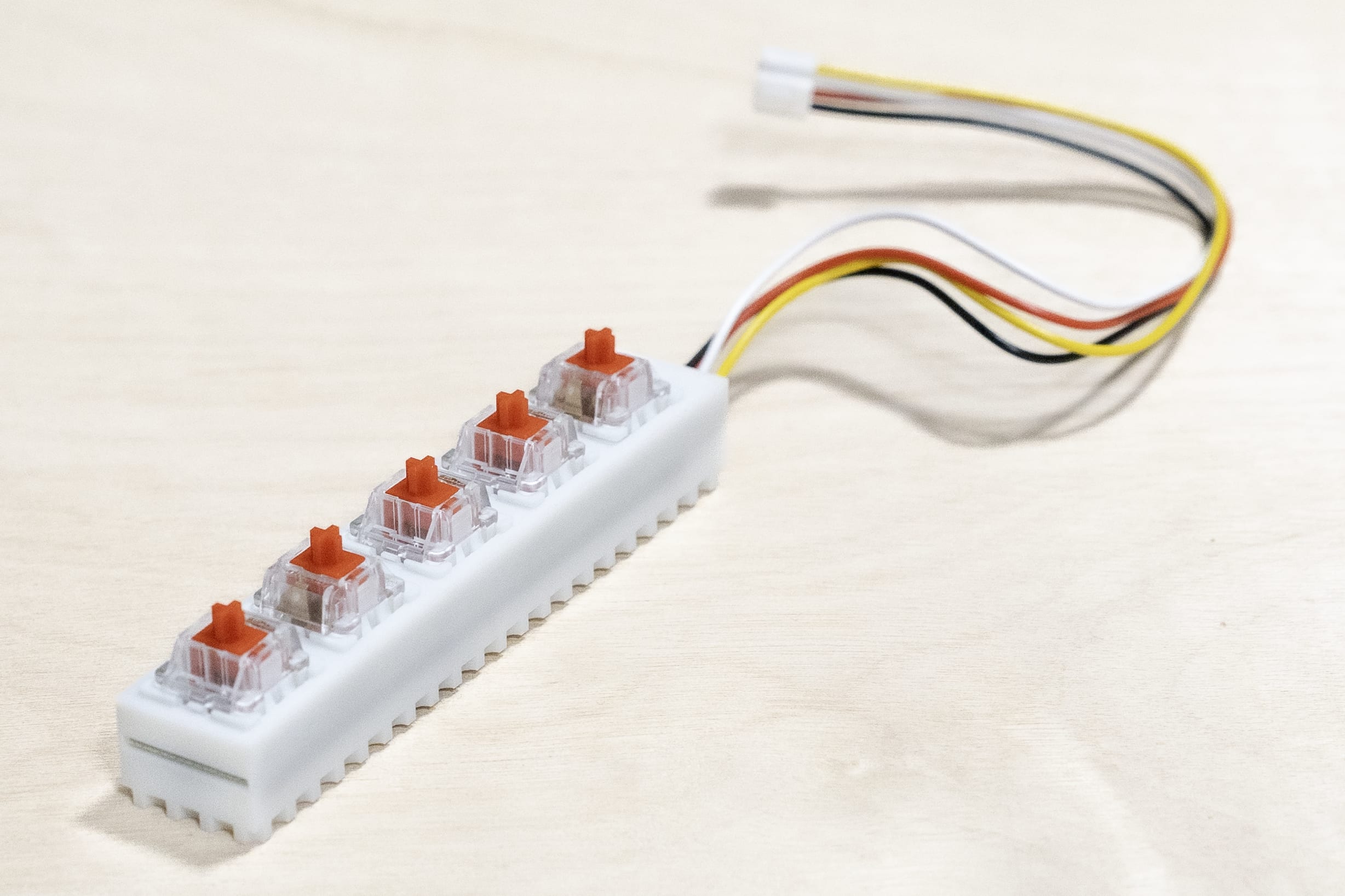
Result of trial and error
Promotional Video Played at the Venue
Its position wasn't ideal, so it might not have caught many eyes, but I had a promotional video looping on an iPad. Based on the video playing on the website's top page, the web designer also created this for me. What exactly is a web designer?
It's regrettable that I didn't have time to add sound effects. I plan to add more operation videos, module introduction videos, etc., in the future.
Brochures and Posters
I also created brochures for the event day. Originally, I made business cards, but as mentioned, the features were hard to convey, so I opted for a brochure with more information. It was easy to distribute, and it was good because even if the front of the table was crowded, people waiting behind could read it and pass the time.
I ordered the printing from Raksul. The volume discount was significant, so I printed extra copies. I still have many left and plan to distribute them at other events too.
Incidentally, for the brochure as well, I only provided the rough sketch, and the designer took it to completion. Seriously, what is a web designer?
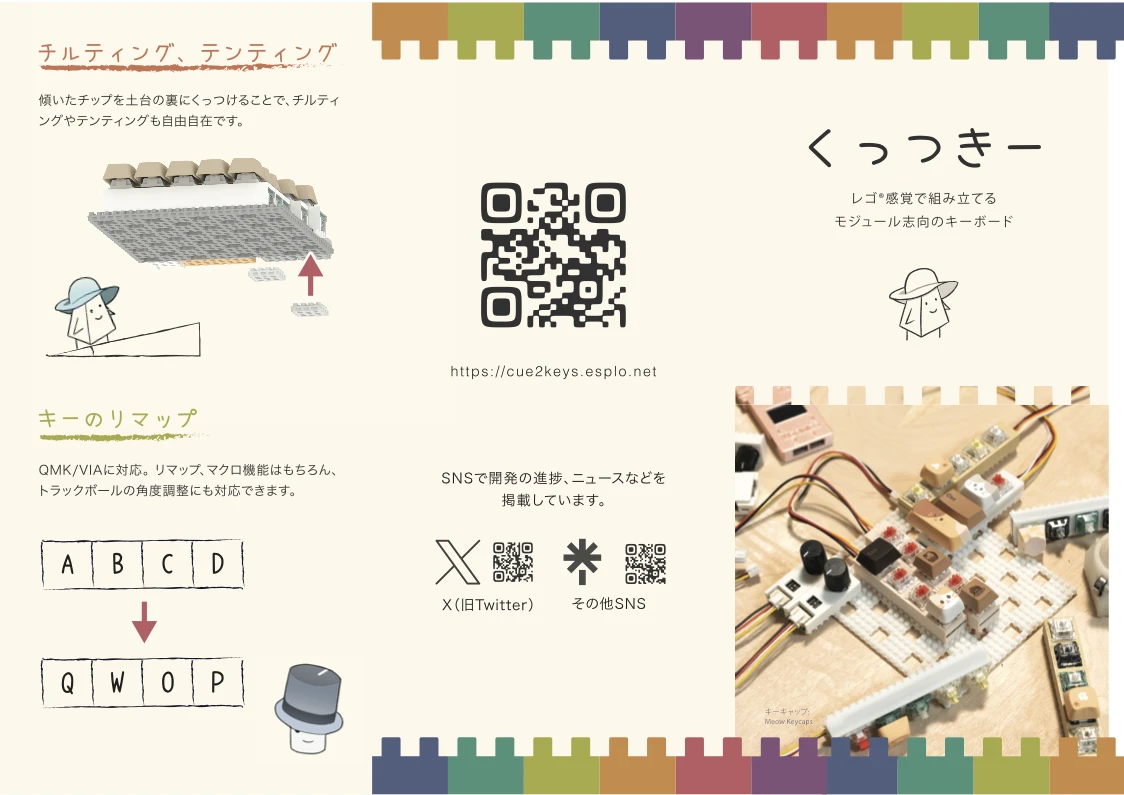
Brochure Front
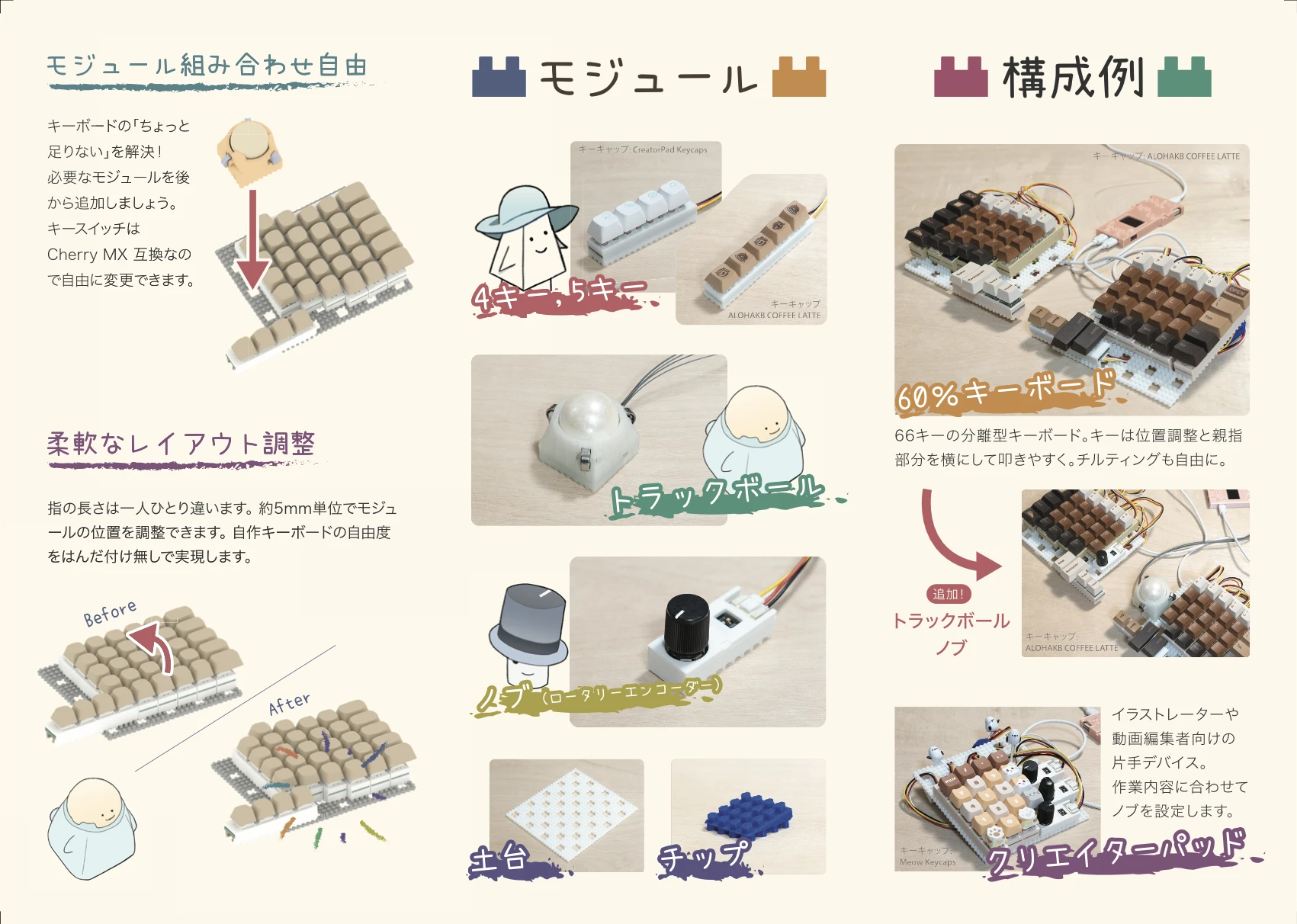
Brochure Back
I tried a B1 size poster for the first time. It's quite huge. As mentioned, it curled up, and I'm not sure if it needs to be that big, so I might make it one size smaller next time.
I ordered the printing from Graphic. They accept RGB submissions, and the colors came out as intended.

Giant Poster
Display Items
To decorate the booth, besides brochures and posters, I prepared many small items like price tags and explanation pop-ups. Because I created them hastily just before the event, there were some imperfections, but I think they helped contribute to the booth's atmosphere.
Incidentally, I printed them all at a nearby convenience store.
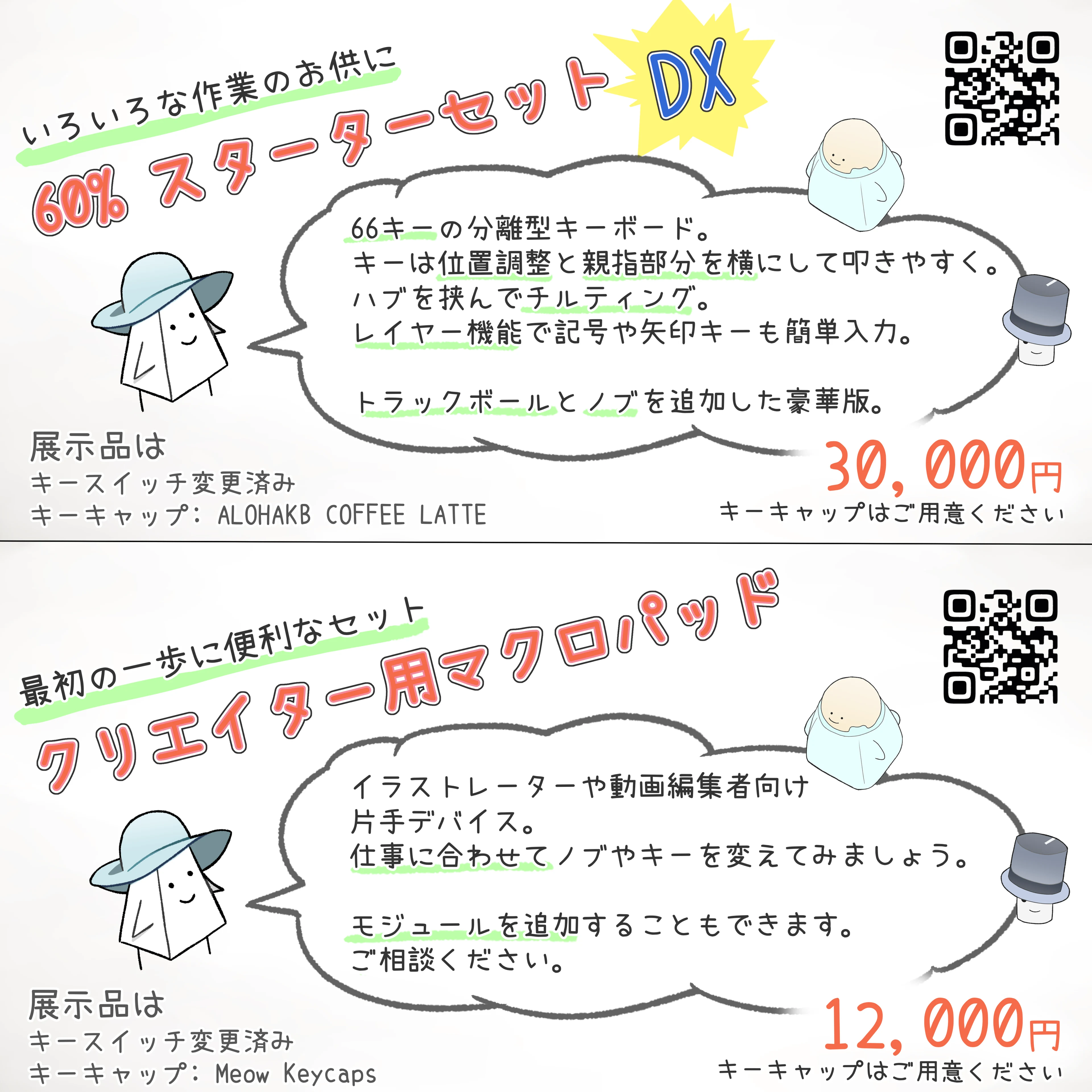
Explanation pop-up for the demo unit

The item list where I forgot to write the prices and didn't notice
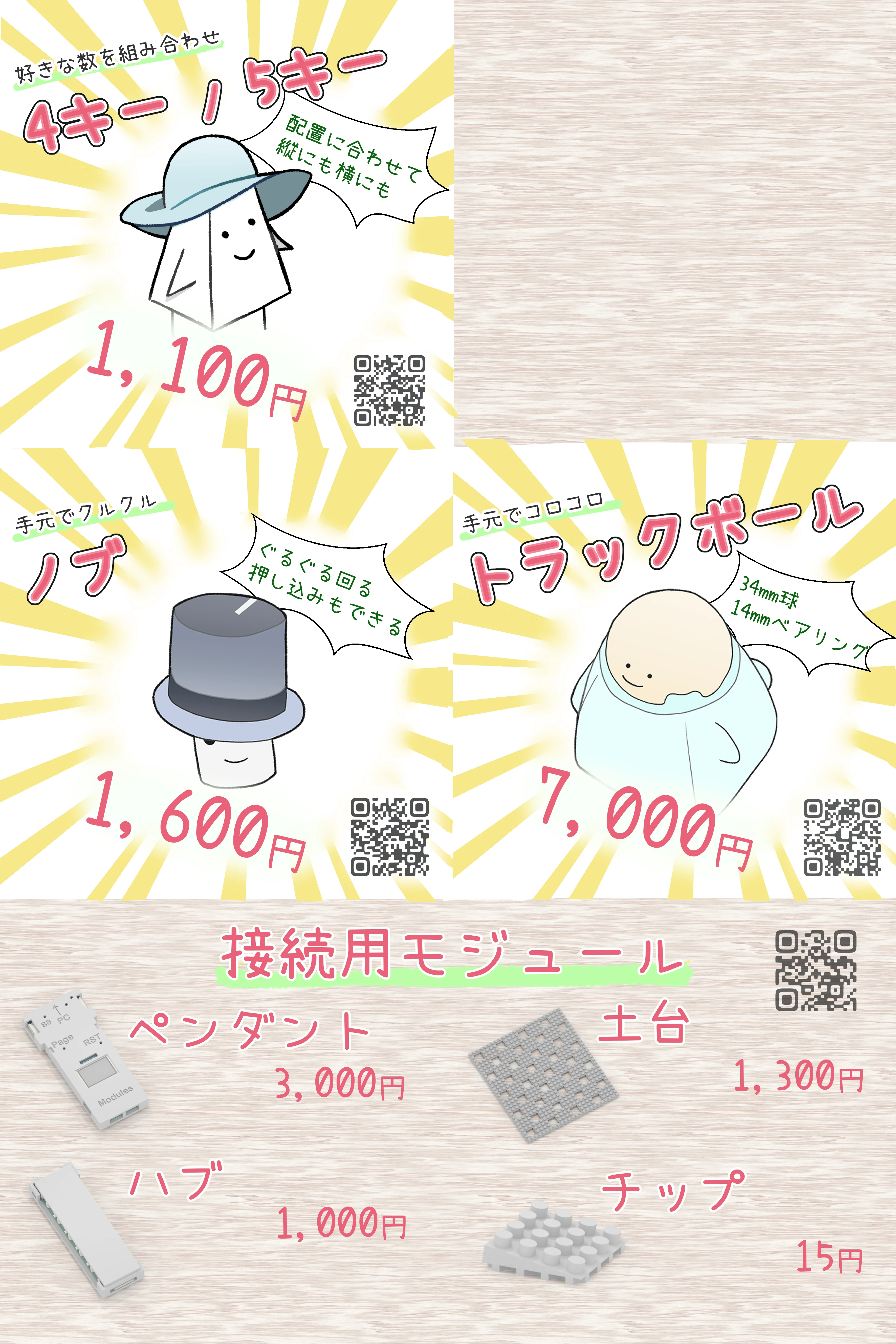
Module price tags. Valuable elements for livening up the booth
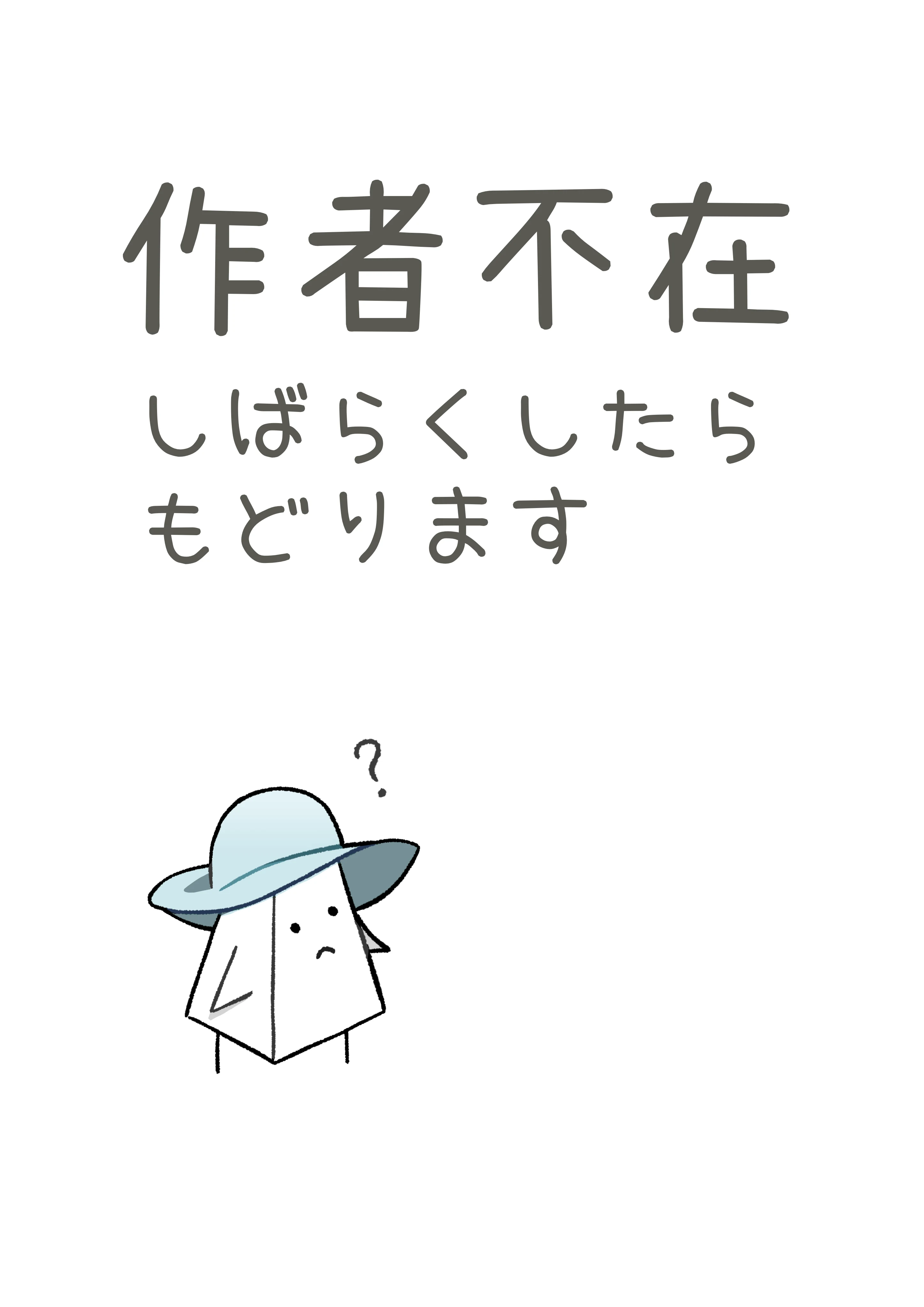
The 'away' sign I ended up not using
Catalog and Online Shop
I also updated the Keyket web catalog and online shop as needed. However, since the product itself was still under development and I could only take photos at the last minute, I was replacing images right up until the event.
For the shop, I tentatively set one up on BOOTH. There were various issues, like accidentally deleting notification registrations due to incorrect settings and the challenge of managing the large number of modules, but I managed to get it looking presentable before the event. I'm currently working hard to restock it within April.
After Keyket
After taking a breather post-event, I listed things I want to do and came up with 42 items. There's still plenty to do.
For the time being, I'm working on producing the second batch. I thought it would just be a matter of reordering, but some parts were out of stock, requiring me to search for alternatives, which took more effort than expected. Currently, I'm on pace to add stock sometime in April.
The firmware has also already received two updates, mainly improving trackball stability and adding scrolling functionality.
Also, since I'll be ordering PCBs anyway, I'm also designing new modules and improving existing ones.
Some modules are scheduled for changes that could be called evolution rather than just improvement, so their names might even change.
Conclusion
Although it was my first time participating, Keyket was a very enjoyable event! I sincerely thank everyone who visited my booth, those who purchased items despite their busy schedules, and the event organizers. Achieving this scale and level of polish in only its second iteration is truly impressive. I'm looking forward to next year.
Regarding the product, I proceeded with the spirit of doing everything I possibly could, and after a long period of intense work, I somehow managed to make it to the first sale. I am deeply grateful to the pioneers before me and everyone who cooperated in the production.
It was quite intense, so I thought I might burn out... but then I found myself designing circuits again, so it seems I can still keep creating. I'm considering various future developments, so I hope you'll look forward to seeing if they come to fruition.


